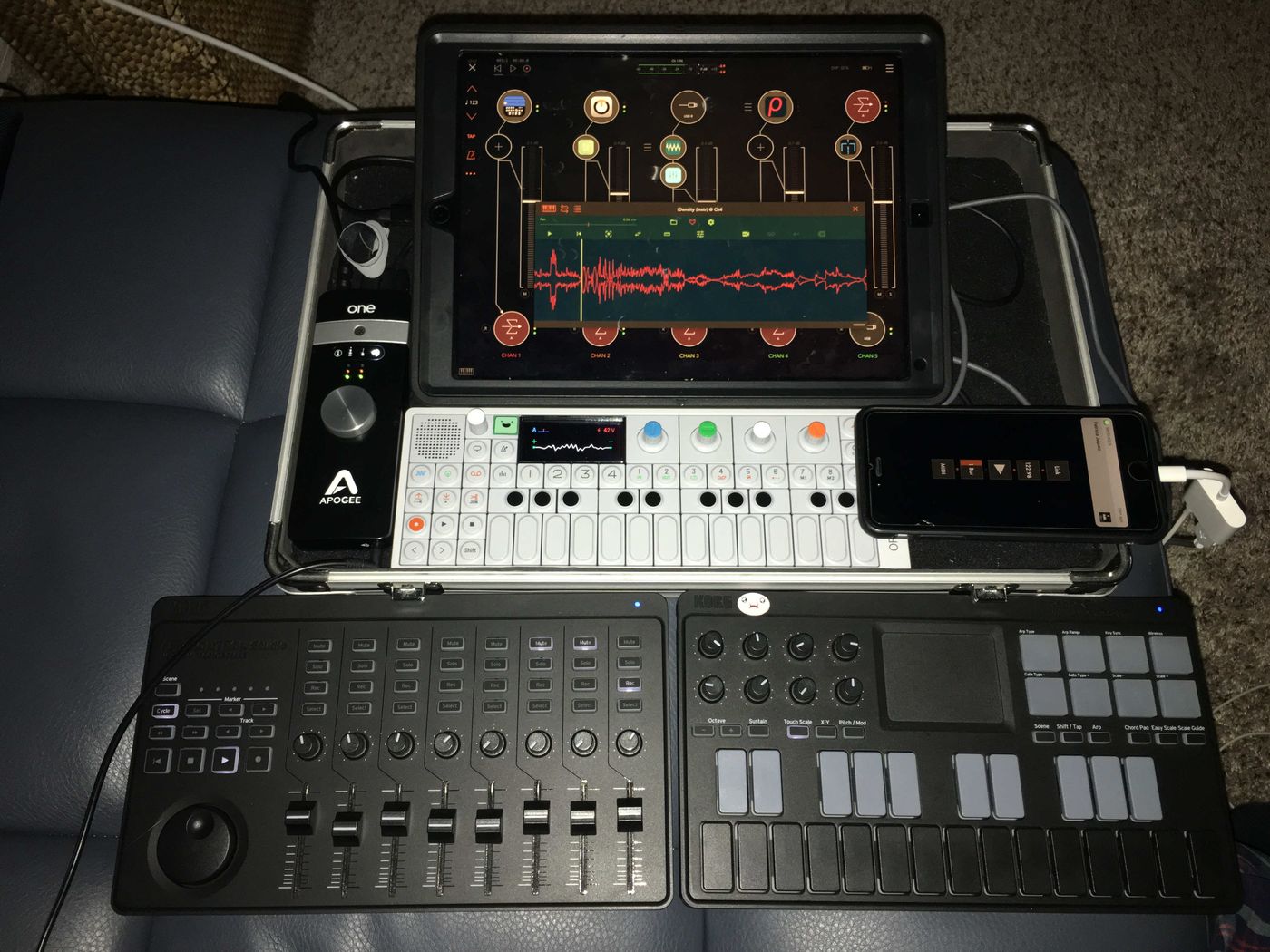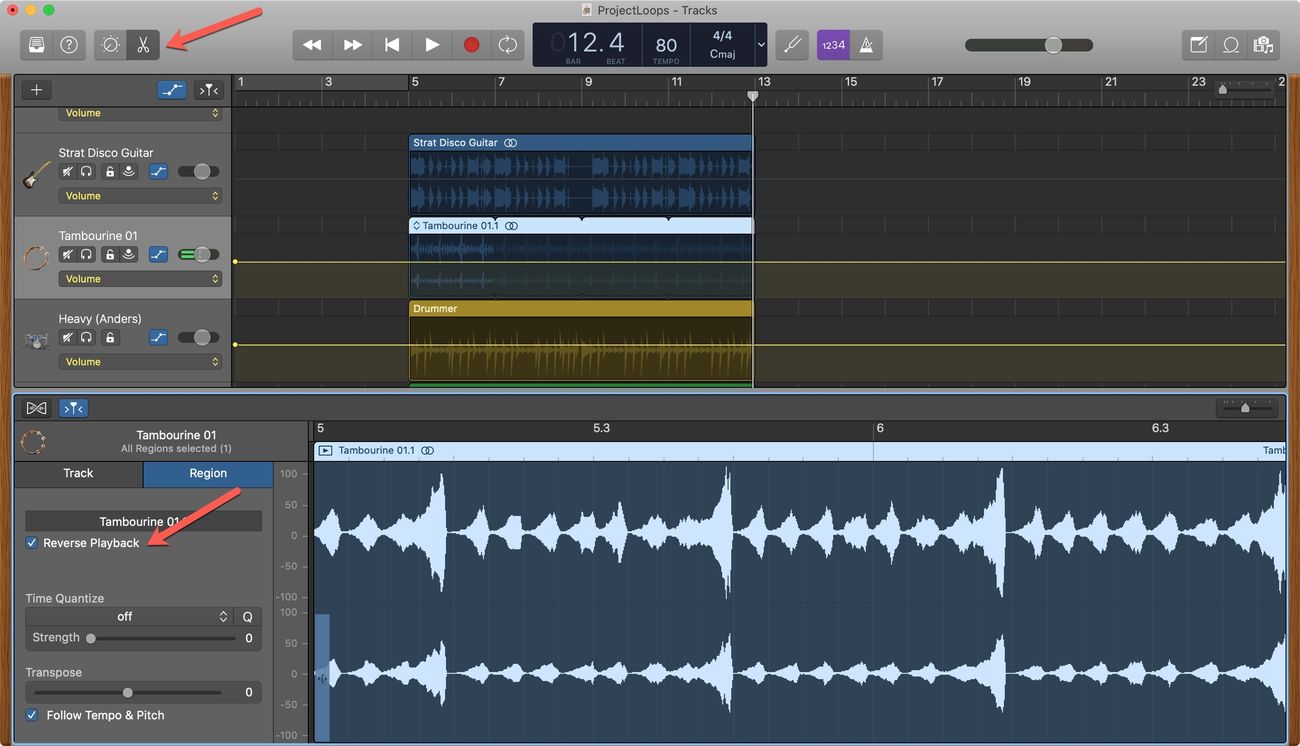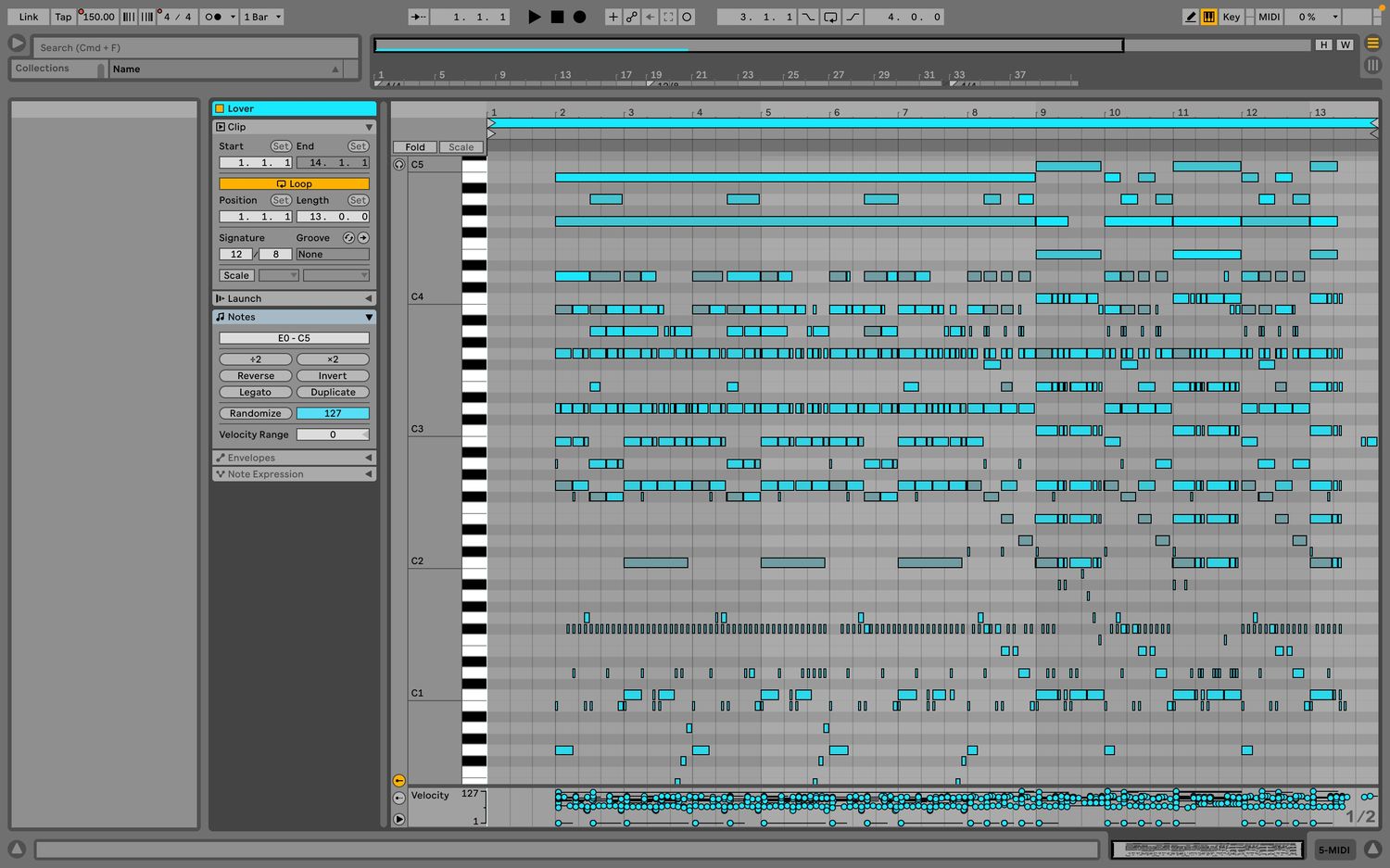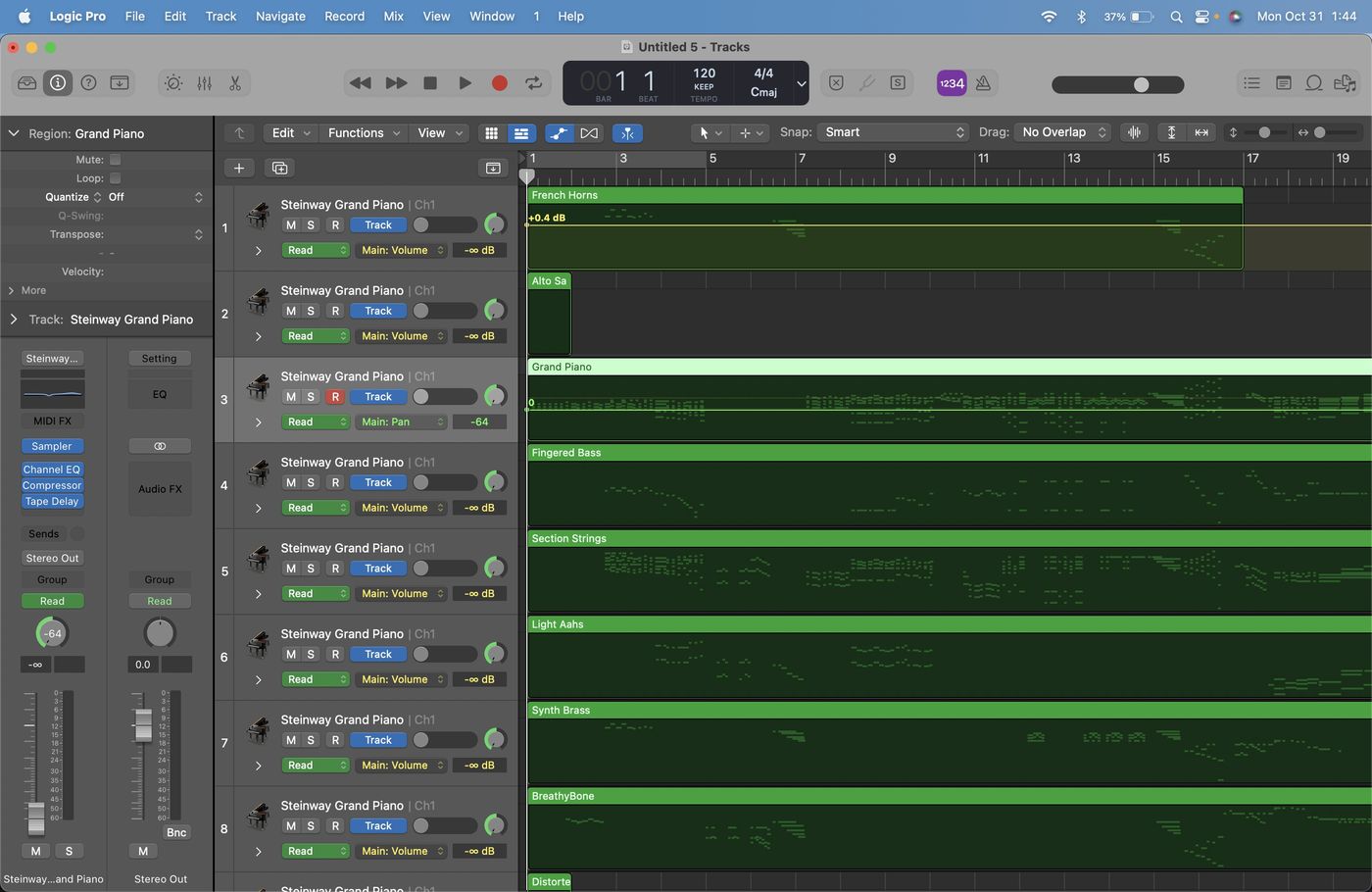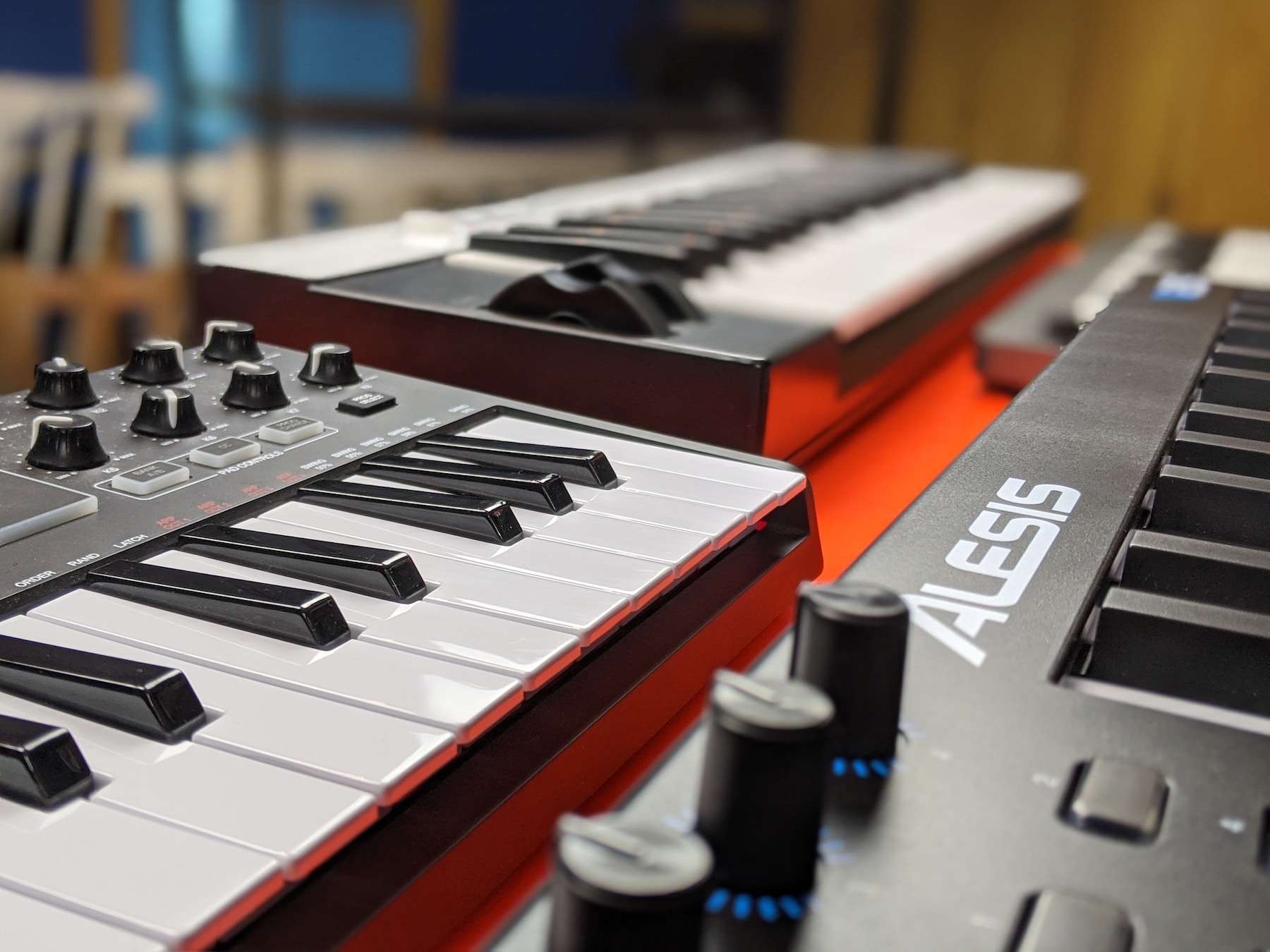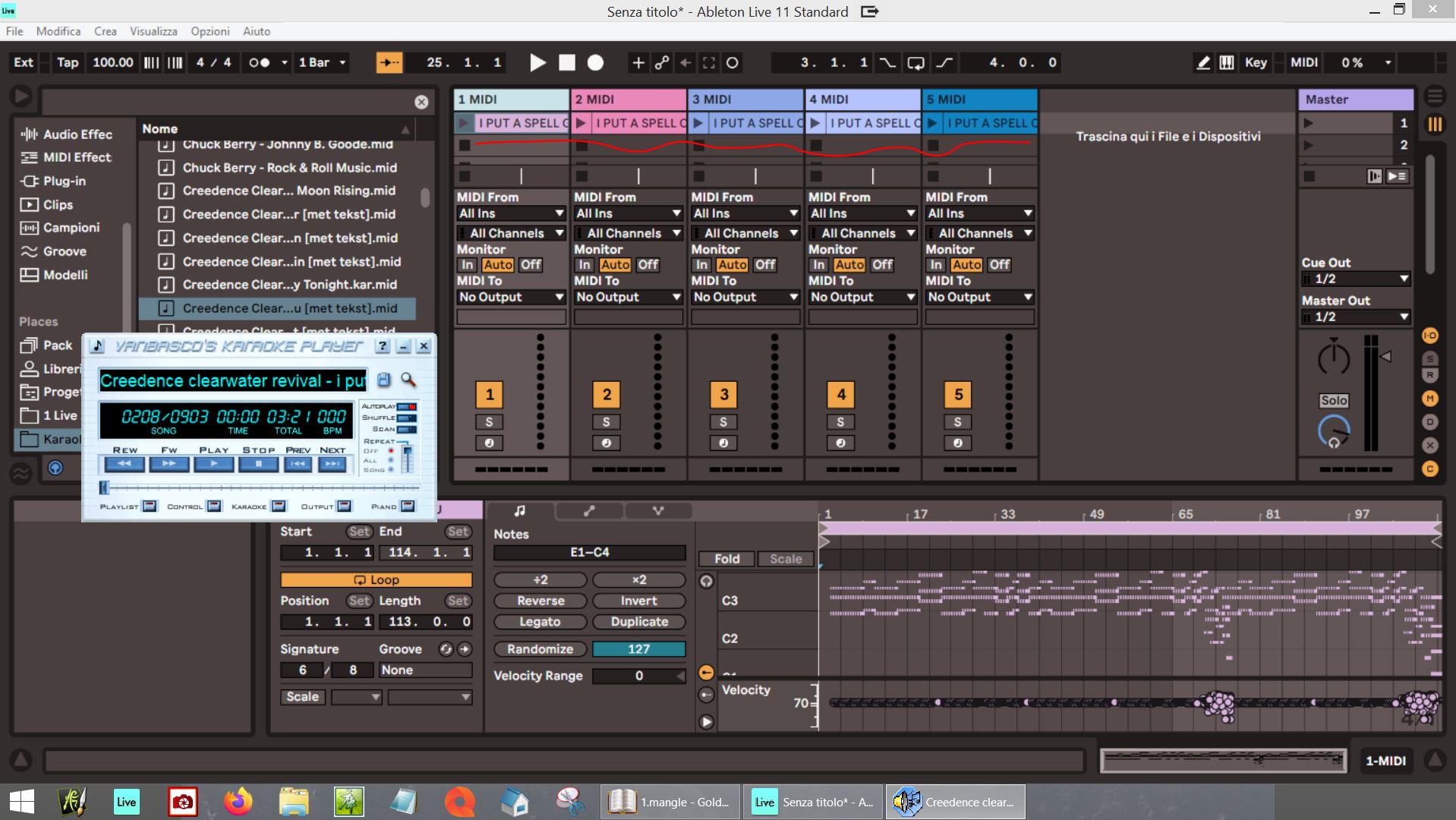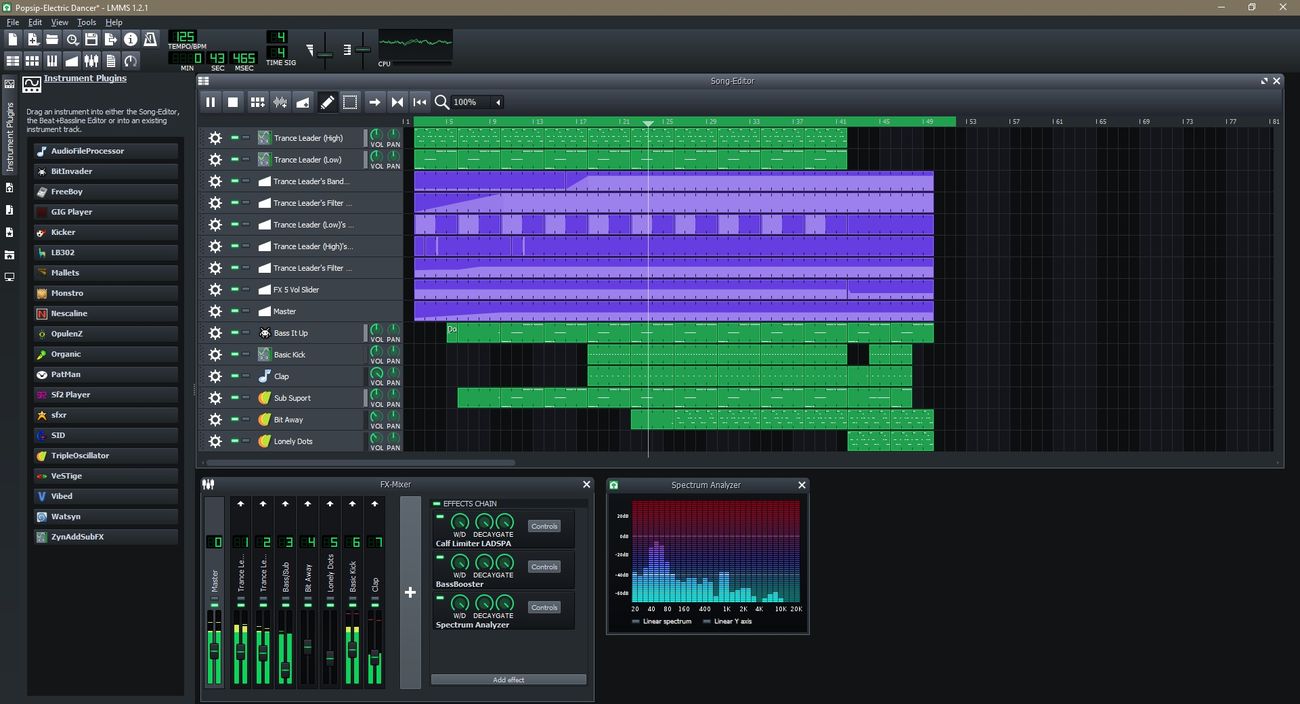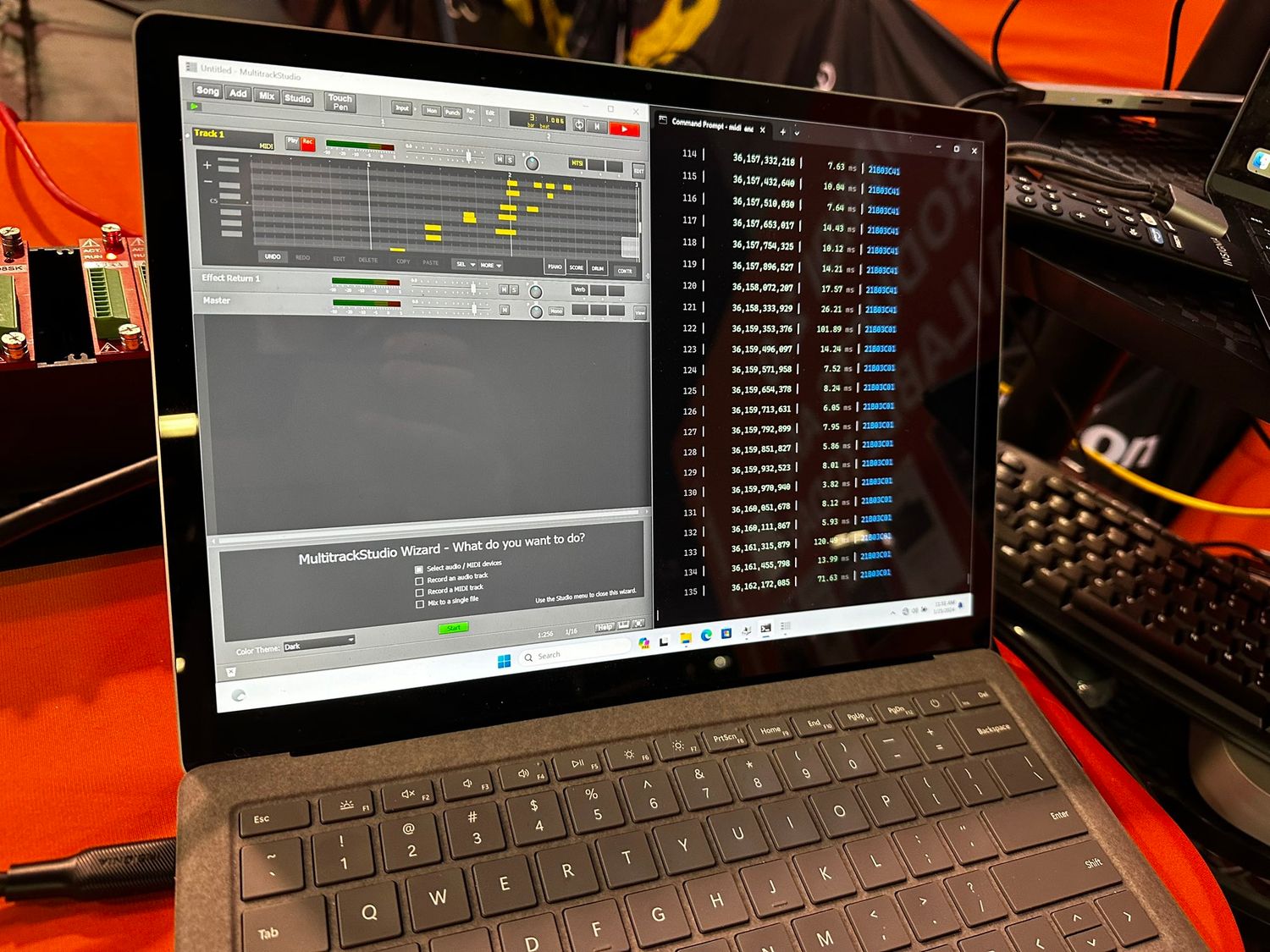Home>Production & Technology>MIDI>How To Import A MIDI File Into Garageband


MIDI
How To Import A MIDI File Into Garageband
Modified: February 22, 2024
Learn how to easily import a MIDI file into Garageband and start creating music with your favorite software instruments. Master the process in no time!
(Many of the links in this article redirect to a specific reviewed product. Your purchase of these products through affiliate links helps to generate commission for AudioLover.com, at no extra cost. Learn more)
Table of Contents
Introduction
Are you ready to infuse your musical creations with the timeless charm of MIDI files? Whether you're a seasoned music producer or an aspiring artist, the ability to import MIDI files into Garageband opens up a world of creative possibilities. MIDI, which stands for Musical Instrument Digital Interface, has been a staple in the music industry for decades, offering a versatile and efficient way to capture and manipulate musical data.
Garageband, Apple's renowned music production software, empowers users to harness the potential of MIDI files within its intuitive interface. By seamlessly integrating MIDI files into your Garageband projects, you can leverage the intricate nuances of various instruments, experiment with diverse musical arrangements, and elevate your compositions to new heights.
In this comprehensive guide, we'll delve into the step-by-step process of importing MIDI files into Garageband, unraveling the seamless synergy between these two musical powerhouses. From creating a new project to refining your imported MIDI file, each stage is designed to equip you with the knowledge and skills needed to seamlessly integrate MIDI files into your musical endeavors.
So, whether you're seeking to incorporate intricate melodies, explore dynamic rhythms, or layer captivating harmonies, the journey of importing MIDI files into Garageband promises to be an enriching and rewarding experience. Let's embark on this musical odyssey together, as we unravel the art of integrating MIDI files into Garageband with finesse and creativity.
Step 1: Open Garageband
To embark on the captivating journey of importing MIDI files into Garageband, the first step is to open the application. Launching Garageband on your Mac is as simple as navigating to the Applications folder, locating the Garageband icon, and clicking to open the software. As the interface unfolds before you, you're greeted by a vibrant and inviting workspace that serves as the canvas for your musical aspirations.
Upon opening Garageband, you're welcomed by a myriad of possibilities, from crafting intricate melodies to sculpting captivating rhythms. The interface exudes a seamless blend of functionality and creativity, beckoning you to explore its diverse array of features. As you immerse yourself in the visual symphony of Garageband, the stage is set for you to breathe life into your musical visions.
With Garageband now open, you're poised to embark on a musical odyssey that transcends boundaries and unlocks the potential of MIDI files. The stage is set, the tools are at your disposal, and the canvas awaits your artistic expression. It's time to seamlessly integrate MIDI files into your Garageband projects, infusing your compositions with the timeless allure of musical intricacies.
As you navigate through the interface, you're greeted by a harmonious convergence of creativity and functionality, inviting you to explore, experiment, and create. The journey of importing MIDI files into Garageband begins with the simple act of opening the application, setting the stage for a symphonic exploration of musical possibilities.
With Garageband at your fingertips, the world of MIDI integration unfolds before you, beckoning you to embark on a musical voyage that transcends boundaries and celebrates the art of creative expression. As you take the first step of opening Garageband, you're embarking on a transformative journey that promises to elevate your musical endeavors to new heights.
Step 2: Create a New Project
Upon opening Garageband, the next pivotal step in our musical expedition is to create a new project. This foundational phase sets the stage for your creative endeavors, providing a blank canvas upon which you can weave intricate musical tapestries. The process of creating a new project in Garageband is akin to unfurling a blank canvas in the realm of visual art, beckoning you to infuse it with your unique musical essence.
To initiate this transformative journey, navigate to the "File" menu at the top of the screen and select "New" to reveal a captivating array of project options. Whether you aspire to craft a soul-stirring ballad, an electrifying rock anthem, or an avant-garde electronic composition, Garageband offers a diverse range of project templates to suit your creative vision.
Upon selecting a project template that resonates with your musical aspirations, you're presented with a spectrum of customizable options, allowing you to define the tempo, time signature, and musical key of your project. This level of flexibility empowers you to tailor the project to suit your artistic inclinations, ensuring that it serves as the perfect backdrop for the integration of MIDI files.
As you delve into the intricate process of setting up your new project, the interface of Garageband unfolds like a tapestry of boundless potential. The intuitive controls and visually engaging elements invite you to shape the sonic landscape of your project, infusing it with the essence of your musical narrative.
With the new project now poised to capture your creative vision, you stand at the threshold of a musical odyssey that promises to unravel the seamless integration of MIDI files. The creation of a new project in Garageband serves as the foundational cornerstone upon which you'll build the symphonic architecture of your musical composition.
As you immerse yourself in the process of crafting a new project, the interface of Garageband becomes a conduit for your artistic expression, inviting you to breathe life into your musical aspirations. With the stage now set and the canvas primed for your creative brushstrokes, the journey of integrating MIDI files into Garageband gains momentum, propelled by the boundless potential of your newly created project.
Step 3: Import MIDI File
With your new project poised for creative exploration, the time has come to seamlessly integrate MIDI files into the captivating realm of Garageband. The process of importing MIDI files infuses your project with a rich tapestry of musical intricacies, offering a seamless avenue to incorporate diverse instrumentations and melodic motifs.
To embark on this transformative phase, navigate to the "Media" option in the top menu bar of Garageband. From the dropdown menu, select "Import MIDI File" to unveil a window that beckons you to explore your file directory. As you peruse your collection of MIDI files, select the file that resonates with your creative vision and click "Import" to initiate the integration process.
As the MIDI file gracefully assimilates into your project, it unfurls a symphony of musical data, enriching your composition with its inherent melodic nuances and rhythmic complexities. The intuitive interface of Garageband seamlessly integrates the MIDI file, positioning it within the sonic landscape of your project with effortless grace.
Upon importing the MIDI file, you're presented with a spectrum of customization options, allowing you to manipulate its tempo, musical key, and instrument assignments to align with your artistic vision. This level of control empowers you to sculpt the MIDI file to suit the unique aesthetic of your composition, ensuring that it harmonizes seamlessly with the existing elements of your project.
As the imported MIDI file takes its rightful place within your project, it becomes a catalyst for creative exploration, inviting you to delve into its musical intricacies and weave it into the fabric of your composition. Whether it's a soulful piano melody, a dynamic drum pattern, or a soaring orchestral arrangement, the imported MIDI file serves as a versatile palette from which you can draw inspiration and elevate your musical narrative.
With the MIDI file now seamlessly integrated into your project, the sonic landscape expands to accommodate its expressive presence, infusing your composition with a newfound depth and complexity. This pivotal juncture in the creative process marks the seamless fusion of MIDI technology and Garageband's intuitive interface, setting the stage for a symphonic exploration of musical possibilities.
As you immerse yourself in the process of importing MIDI files, the boundaries of creative expression dissolve, giving rise to a harmonious convergence of musical elements within your project. The imported MIDI file becomes a catalyst for artistic innovation, breathing new life into your composition and inviting you to embark on a transformative journey of musical exploration.
The integration of MIDI files into Garageband transcends mere technicality, evolving into a seamless fusion of art and technology that empowers you to sculpt captivating musical narratives. With the MIDI file now intricately woven into the sonic fabric of your project, the stage is set for a symphonic odyssey that celebrates the boundless potential of creative expression within the realm of music production.
Step 4: Edit MIDI File
As the imported MIDI file seamlessly integrates into your project, Garageband unveils a myriad of creative tools and intuitive features that empower you to sculpt and refine the nuances of the MIDI data. The process of editing the MIDI file within Garageband transcends mere technical manipulation, evolving into a transformative journey of artistic expression and sonic exploration.
Upon importing the MIDI file, you're greeted by a visually engaging interface that invites you to delve into the intricate details of the musical data. Garageband's intuitive controls empower you to manipulate the MIDI file with precision and finesse, allowing you to tailor its nuances to align with your creative vision. Whether you aspire to adjust the velocity of individual notes, refine the timing of musical phrases, or explore diverse instrument assignments, Garageband offers a comprehensive suite of editing tools that cater to your artistic aspirations.
The editing process unfolds as a harmonious convergence of creativity and functionality, offering a seamless avenue for you to infuse the MIDI file with your unique musical essence. As you navigate through the interface, you're presented with a spectrum of customization options, including note velocity adjustments, pitch modulation, and rhythmic refinements. These versatile tools empower you to breathe life into the MIDI file, sculpting its melodic contours and rhythmic intricacies to resonate with the overarching narrative of your composition.
Garageband's intuitive piano roll editor serves as a canvas for your artistic expression, allowing you to visualize and manipulate the individual notes and musical phrases within the MIDI file. This level of visual feedback empowers you to fine-tune the expressive nuances of the MIDI data, fostering a deeper connection with the musical intricacies embedded within the composition. Whether you seek to embellish the MIDI file with dynamic articulations, explore harmonic variations, or craft intricate melodic motifs, the piano roll editor serves as a versatile platform for your creative endeavors.
As you immerse yourself in the process of editing the MIDI file, the boundaries of creative expression dissolve, giving rise to a harmonious convergence of musical elements within your project. The MIDI file becomes a conduit for artistic innovation, inviting you to explore, experiment, and refine its musical tapestry with boundless creativity. Whether you're sculpting a soul-stirring piano arrangement, refining the rhythmic nuances of a dynamic drum pattern, or infusing the composition with soaring orchestral motifs, the editing process unfolds as a symphonic exploration of musical possibilities.
With each meticulous edit and artistic refinement, the MIDI file evolves into a captivating embodiment of your creative vision, seamlessly intertwining with the sonic landscape of your project. The editing process within Garageband transcends technical manipulation, culminating in a transformative journey of artistic expression and sonic exploration. As you harness the creative potential of the MIDI file, the symphonic odyssey of musical innovation unfolds, propelled by the boundless possibilities of Garageband's intuitive editing tools.
The intricate process of editing the MIDI file within Garageband serves as a testament to the seamless fusion of art and technology, empowering you to sculpt captivating musical narratives with finesse and creativity. With each refined note and intricately crafted phrase, the MIDI file becomes a living embodiment of your artistic expression, enriching your composition with a newfound depth and complexity. As you navigate the editing process, the MIDI file transcends its technical origins, evolving into a captivating testament to the boundless potential of creative expression within the realm of music production.
Step 5: Save and Export
With the intricate process of integrating and refining the MIDI file within your project now complete, the final step in this captivating musical odyssey is to save and export your composition. This pivotal phase ensures that your artistic endeavors are preserved and made accessible for sharing, further refinement, or future creative exploration.
To save your project, navigate to the "File" menu at the top of the Garageband interface and select "Save" or "Save As" to preserve your composition. This simple yet crucial act safeguards your musical creation, ensuring that it remains intact for future endeavors. Whether it's a soul-stirring symphony, an electrifying pop arrangement, or an experimental fusion of musical genres, saving your project secures the culmination of your creative vision.
Once your project is safely preserved, the next step is to export it in a format that allows for seamless sharing and playback across diverse platforms. Navigate to the "Share" option in the Garageband menu and select "Export Song to Disk" to unveil a spectrum of export options. From standard audio formats such as MP3 and WAV to high-fidelity options like AIFF and FLAC, Garageband offers a diverse array of export formats to suit your specific requirements.
Upon selecting your desired export format, you're presented with the option to define the audio quality, metadata, and destination for the exported file. Whether you aspire to share your composition with a global audience, collaborate with fellow musicians, or simply archive your creative endeavors, the export process empowers you to tailor the output to align with your artistic intentions.
As the export process unfolds, Garageband meticulously renders your composition into the chosen format, encapsulating the essence of your musical narrative within a portable and shareable file. This transformative phase marks the culmination of your artistic journey within Garageband, presenting you with a tangible embodiment of your creative expression that transcends boundaries and resonates with audiences far and wide.
With the export process now complete, your composition stands as a testament to the seamless integration of MIDI files and the boundless potential of Garageband's creative environment. Whether it's a mesmerizing symphony, an infectious groove, or an ethereal sonic tapestry, the exported file encapsulates the essence of your musical vision, inviting listeners to embark on a transformative auditory experience.
As you reflect on the journey of importing, refining, and exporting your composition, the symphonic odyssey within Garageband unfolds as a testament to the enduring allure of musical creativity. From the seamless integration of MIDI files to the transformative process of editing and exporting, each phase of the journey celebrates the art of musical expression within the realm of digital production.
The act of saving and exporting your composition within Garageband represents the culmination of your artistic endeavors, offering a tangible testament to the boundless potential of creative expression within the realm of music production. Whether it's the dawn of a new musical exploration or the culmination of a profound creative odyssey, the saved and exported composition serves as a timeless artifact of your artistic vision, poised to resonate with audiences and inspire fellow creators across the musical landscape.
Conclusion
As we draw the curtains on this enriching journey of integrating MIDI files into Garageband, it's evident that the seamless synergy between these two musical powerhouses has unlocked a world of creative possibilities. From the initial act of opening Garageband to the transformative process of importing, refining, and exporting MIDI files, each step has culminated in a symphonic exploration of musical innovation and artistic expression.
The integration of MIDI files into Garageband transcends mere technicality, evolving into a seamless fusion of art and technology that empowers creators to sculpt captivating musical narratives with finesse and creativity. From the harmonious convergence of musical elements within the project to the transformative journey of artistic expression and sonic exploration, each phase has celebrated the boundless potential of creative expression within the realm of music production.
Through the intricate process of importing MIDI files, Garageband has served as a conduit for artistic innovation, inviting creators to explore, experiment, and refine musical tapestries with boundless creativity. The seamless integration and editing of MIDI files within the intuitive interface of Garageband have fostered a deeper connection with the musical intricacies embedded within compositions, empowering creators to breathe life into their artistic visions.
As creators navigate the final phase of saving and exporting their compositions, the culmination of their artistic endeavors stands as a testament to the enduring allure of musical creativity. Whether it's the dawn of a new musical exploration or the culmination of a profound creative odyssey, the saved and exported compositions serve as timeless artifacts of artistic vision, poised to resonate with audiences and inspire fellow creators across the musical landscape.
In essence, the journey of importing MIDI files into Garageband celebrates the art of creative expression, inviting creators to embark on a transformative odyssey that transcends boundaries and resonates with audiences far and wide. As the symphonic exploration within Garageband unfolds, it becomes evident that the integration of MIDI files has elevated the realm of music production, empowering creators to weave intricate musical tapestries and share their artistic visions with the world.
The journey of importing MIDI files into Garageband is not merely a technical process; it's a testament to the enduring symbiosis between art and technology, fostering a harmonious convergence of musical innovation and creative expression. As creators continue to harness the boundless potential of MIDI integration within Garageband, they pave the way for a future brimming with captivating musical narratives and transformative sonic experiences.

